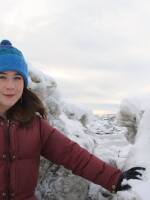The board of game considered 94 proposals over the course of eight days. They voted to approve 44 of them, including a proposal that will allow hunters to use a snow machine to position caribou on the west side of Bristol Bay
The Alaska Board of Game met in Dillingham last week to consider hunting and trapping regulations in the Central/Southwest Region. That region includes Glenallen, Palmer, Bristol Bay and surrounding communities. Over the course of the eight day meeting, the board deliberated on 94 proposed changes to regulations and sought input from the public and agencies that manage land and wildlife.
The board approved 44 proposals total. In the fall, Bristol Bay residents will see expanded moose hunting opportunities in Game Management Unit 17A, on the southwest side of Bristol Bay. It extended the fall moose hunt by five days for residents and 10 days for non-residents in GMU 17A. It also reauthorized the antlerless fall moose hunt in the unit.

On the east side of Bristol Bay, the board voted to expand GMU 9 fall caribou hunt into an area of 9C that was previously closed. It also voted to reduce the bag limit and shorten the season for ptarmigan due to low population numbers, so that the hunt runs from August 10 to the end of February. Also out of concern for low population numbers, the board voted to shorten the season for Alaska hares to a hunt that runs from November to January with a bag limit of four hares per hunter total.
Near Glenallen, the board rejected a number of proposals that would have limited subsistence harvest hunts for moose and caribou in GMU 13. Board Chair Ted Spraker says that the tension between subsistence and sport hunters that unit is longstanding because it is centrally located between the large populations of Fairbanks, the Matanuska-Susitna Valley and Anchorage.
“What the board did is they tried to provide for additional subsistence type of hunting in Unit 13…Those people that live there are still trying to practice a customary and traditional use pattern that they’ve done forever, thousands of years. And it’s just so difficult because they’re on the road system and there’s so much outside interest in hunting that area. The board has struggled with that for years,” said Straker.
The board also voted to establish a youth caribou hunting season in GMU 13 and will offer additional nonresident caribou permits by draw when population objectives are met.
This was the first time the meeting was held in Bristol Bay. Spraker said that meeting in rural Alaska was of value, even though it was more expensive than meeting on the road system.
“When you get into local communities, you get that local flavor of what’s going on. That’s something we don’t get when we’re in Anchorage because we don’t have very many from here able to travel to Anchorage. So that’s the real benefit to coming here,” Spraker said.

One issue that generated quite a bit of local interest and testimony was a proposal to allow hunters on the west side of Bristol Bay, in GMU 17 to use a snow machine to position caribou for harvest.
More than 30 people attended a board-hosted town hall meeting midweek to discuss the proposal. Most in favor of the proposal said that it would clarify regulations and allow the traditional practice of herding caribou during a hunt without fear of legal repercussion.
“That’s what our ancestors have done before the snow machines came around. I assume that they would hunt as a group. There’d be chargers waiting for the caribou and somebody herding them towards them,” said Kenneth Nukwak of Manokotak, who submitted the proposal.
Most opposed expressed concern that this change in regulation could open the door for chasing caribou at high speed, which could have a negative impact on the health of the animals that survive and on the quality of the meat harvested.
The measure passed by a 4-3 vote, so, in the fall, regulations will expressly allow hunters to position but not chase caribou by snow machine.
More information about specific proposals and the board’s decisions can be found here. The new regulations will be incorporated into the 2018-2019 Alaska hunting regulations, which go into effect July 1, 2018.
Contact the author at avery@kdlg.org 0r 907-842-5281.



